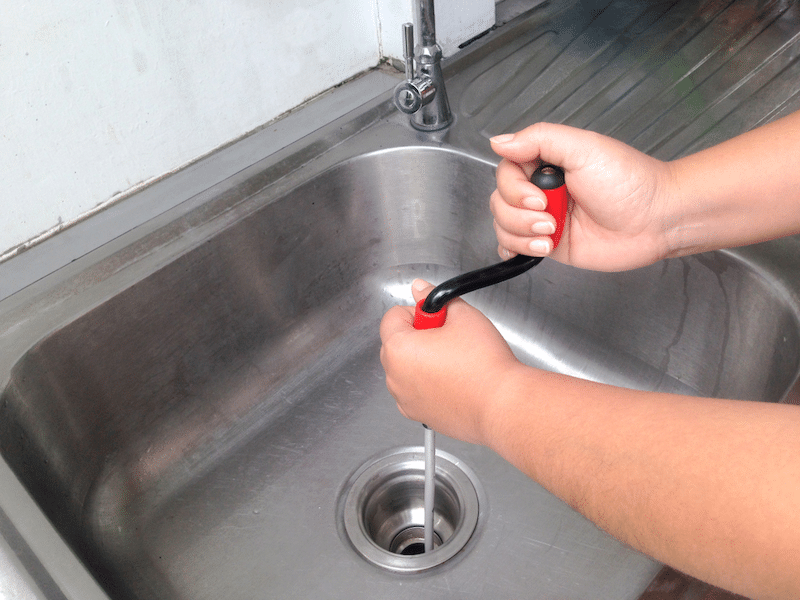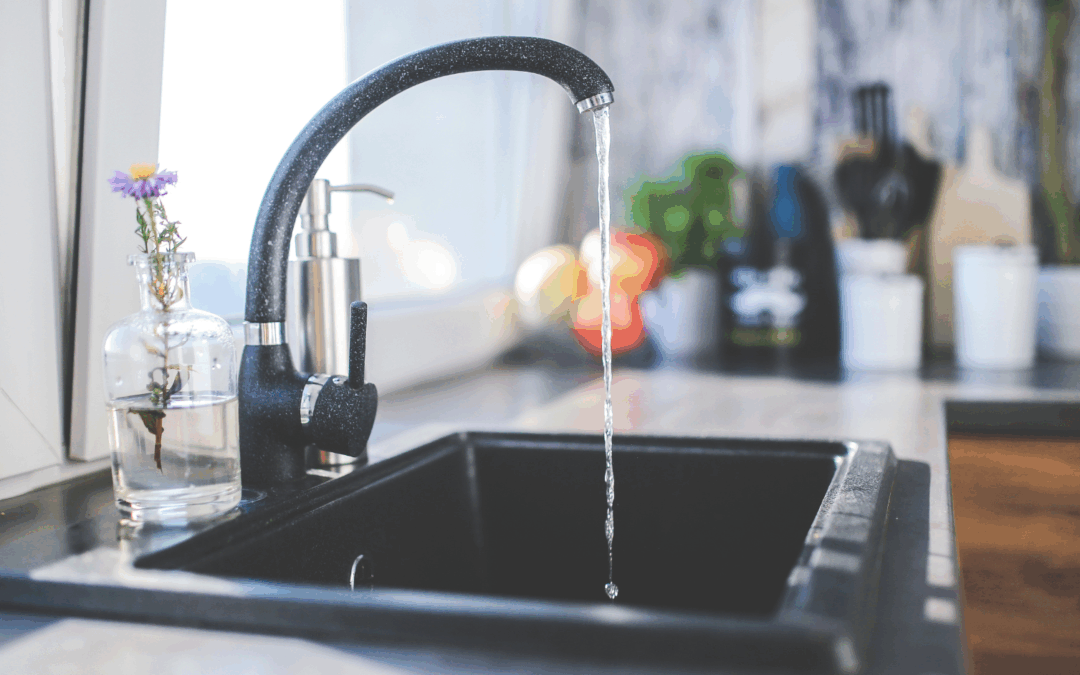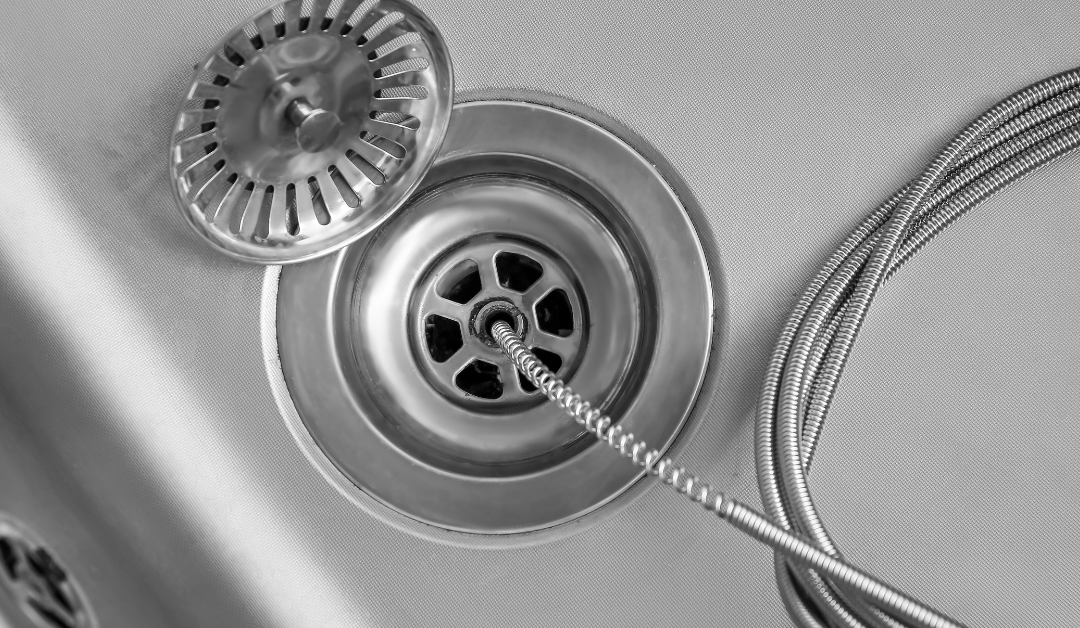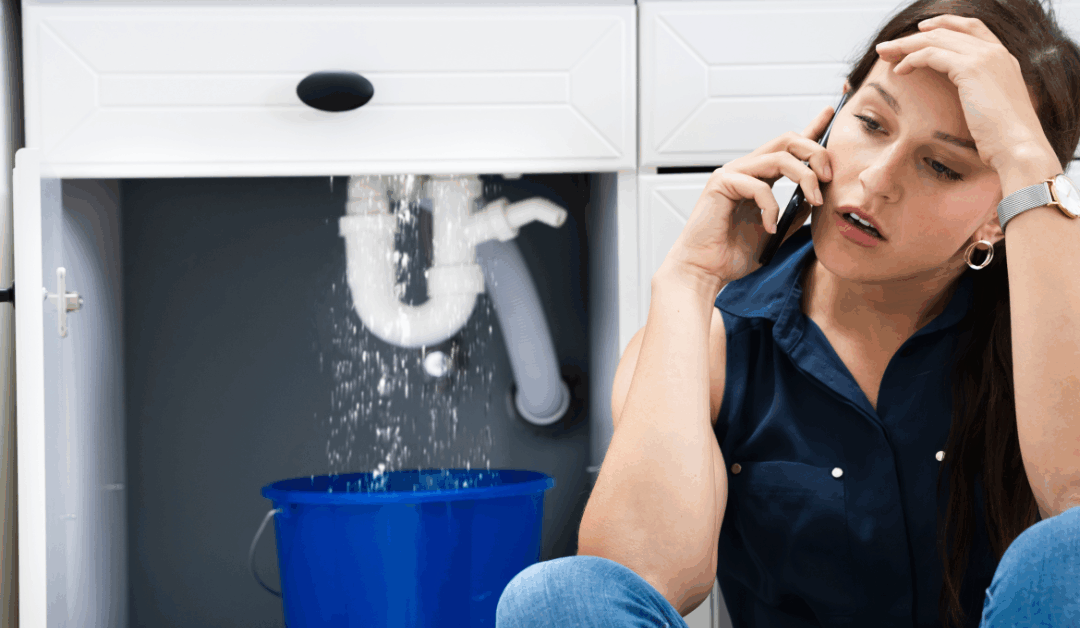Do you know how to use a plumbers snake?
No one enjoys dealing with a clogged drain, but it’s something many homeowners face sooner or later. From shower drains filled with hair to kitchen sinks blocked by grease and food debris, a clogged drain can be frustrating—and expensive if you need professional help.
But here’s the good news: with the right plumbing tools, you can tackle many drainage problems on your own. One of the most valuable tools for unclogging drains is the plumber’s snake, also known as a drain snake or drain auger.
Schedule Service Online
Get a free estimate so you know what you're signing up for
"*" indicates required fields
For Emergency Services Call: 410-255-9300
This post will guide you through what a plumbing snake is, when to use it, and how to effectively address different plumbing issues in your home. Whether you’re a DIY enthusiast, a homeowner, or even a plumber looking for insights, this guide is for you.
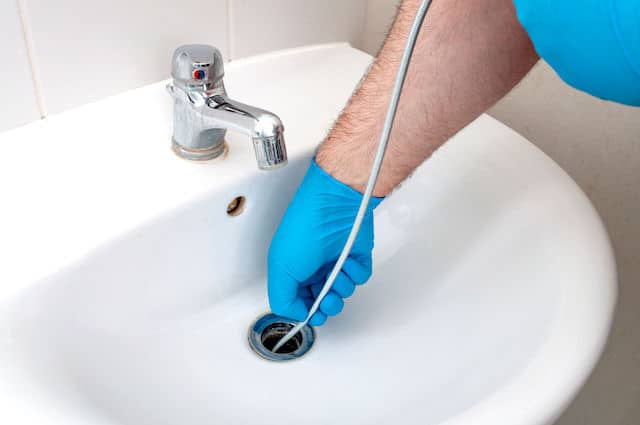
Plumbing Snakes: An Essential Tool for Drain Unclogging
Plumbing snakes, also known as drain snakes or augers, are indispensable tools for tackling common drain clogs in your home. These flexible and long devices are designed to reach deep into pipes, dislodging and breaking up stubborn blockages. Whether it’s a clogged sink, shower drain, or toilet, a plumber’s snake can be your go-to solution. Here’s how to use a plumbing snake effectively, especially if you’re a beginner:
- Gather the Necessary Tools: Before getting started, ensure you have the following items on hand: a plumber’s snake, gloves, and a bucket or towel to catch any water or debris that may come out during the unclogging process.
- Locate the Drain Opening: Identify the drain opening where the clog is likely located. This could be a sink drain, bathtub drain, or toilet drain. Remove any covers or stoppers that may be obstructing access to the pipe.
- Insert the Snake into the Drain: Carefully insert the head of the plumbing snake into the drain opening. Push it gently but firmly, allowing it to navigate through the pipe.
- Rotate and Push: Once the snake is inserted, rotate the handle clockwise while simultaneously pushing it further into the drain. This rotating motion helps the snake grip onto the clog and break it up.
- Continue Advancing and Rotating: Gradually feed more of the snake into the drain, maintaining the rotational motion as you go. Take your time and be patient, ensuring the snake reaches as far as possible into the pipe.
- Break Up the Clog: As you encounter resistance, continue rotating and applying gentle pressure. This will help the plumbing snake work its way through the clog, pushing it aside or breaking it up into smaller pieces.
- Retrieve the Snake: Once you’ve reached the blockage or if you encounter increased ease of rotation, slowly retract the snake from the drain while continuing to rotate it. Be cautious not to rush this step, as it can cause the clog to become lodged in the pipe.
- Clean Up and Test: After removing the snake, clean any debris or residue from the drain opening and surrounding area. Flush the drain with hot water to ensure it is now clear and functioning properly.
Remember, if you encounter a particularly stubborn or persistent clog, it’s best to consult a professional plumber for assistance. With practice and proper technique, you’ll become more confident in using a plumber’s snake to address common drain clogs in your home.
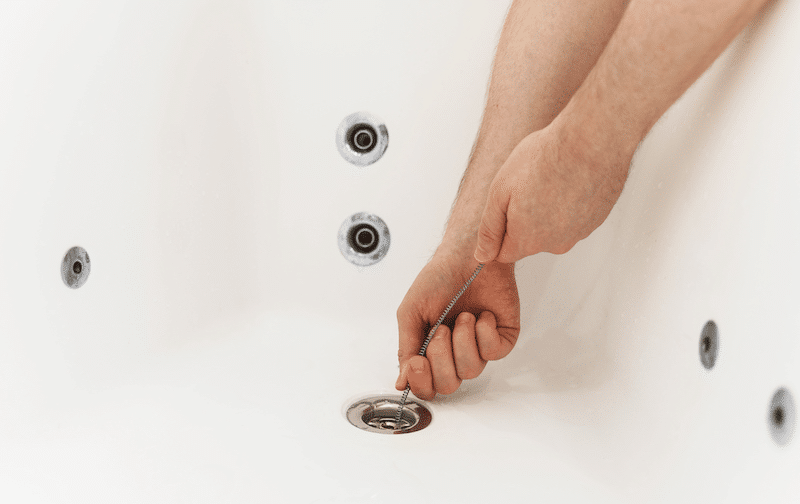
Why Use a Plumber’s Snake Instead of Chemicals?
While liquid drain openers may seem like an easy fix, they can do more harm than good. Many homeowners don’t realize that harsh chemicals can corrode your pipes, harm the environment, and even fail to address stubborn obstructions like hair or debris stuck in the p-trap. On the other hand, a plumbing snake offers a safer, more effective solution—one that physically removes the clog without damaging your plumbing system.
How to Use a Plumber’s Snake
Step 1. Gather Your Tools
To get started, you’ll need the right plumbing snake for the job, gloves to protect your hands, and a bucket to catch any debris or water. Optional tools include a flashlight, pliers, and cleaning supplies.
Step 2. Identify the Clog Location
Different drains require different approaches:
- Shower and Bathtub Drains: Hair and soap residue often cause clogs.
- Kitchen Sinks: Grease, food debris, and buildup in the p-trap are common culprits.
- Toilets: Foreign objects, paper buildup, or waste may clog the line.
Knowing the location helps you choose the right length and type of drain snake.
Step 3. Insert the Snake
Carefully insert the flexible metal cable into the drain opening. Feed the cable in slowly to avoid damaging the pipes.
- For sinks, remove the p-trap under the sink for easier access.
- For toilets, use a toilet auger to avoid scratching the porcelain.
- For larger pipes, opt for a longer snake or a motorized auger.
Step 4. Twist and Push
Once the cable is inserted, twist the handle to rotate the auger. This twisting motion helps the coiled hook grip onto the clog. Apply gentle pressure and continue twisting as you feed the snake further into the pipe.
Step 5. Break or Pull the Blockage
When you feel resistance, you’ve reached the blockage. Work the snake back and forth to break up the obstruction or hook onto it. If the clog is made of hair or debris, carefully pull it out of the drain.
Step 6. Test the Drain
Run water to see if the clog has been cleared. If the water flows freely, you’ve successfully unclogged the drain. If not, repeat the process or consider seeking professional help for stubborn obstructions.
Step 7. Clean the Snake
After the job is done, clean your plumbing snake thoroughly to prevent rust and keep it in good working order for the next use.
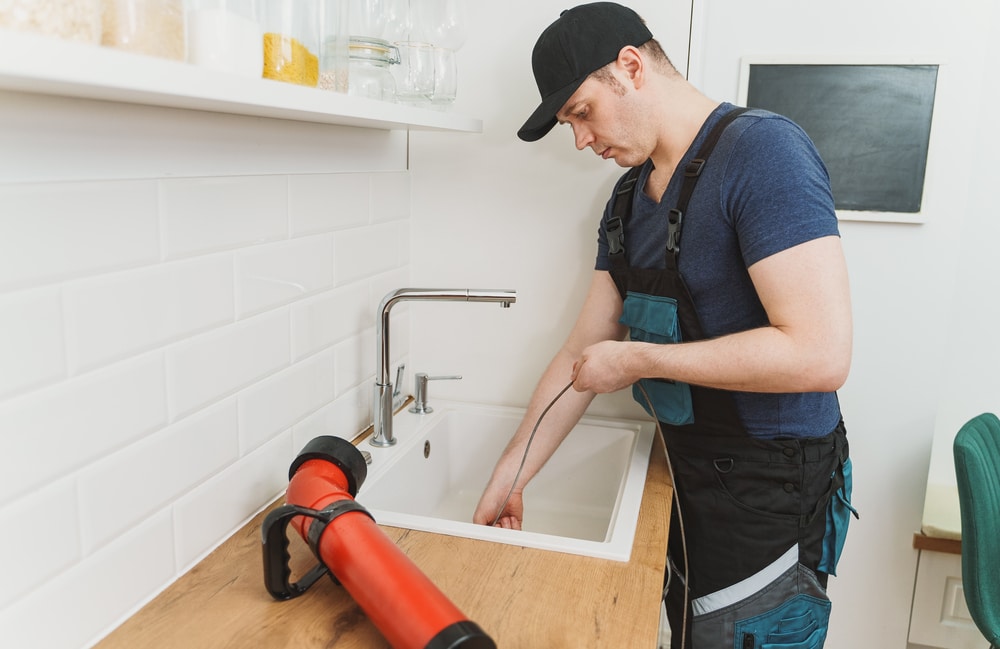
Tips for Handling Specific Drains
Kitchen Sinks
- Remove the p-trap to inspect for immediate blockages before using the snake.
- Avoid pouring grease down the drain in the future—grease solidifies and causes clogs.
Shower and Bathtub Drains
- Use the snake to pull out hair build-up and soap scum.
- Install a drain cover to prevent hair and debris from entering the pipes.
Toilets
- Always use a toilet auger instead of a regular snake to avoid damaging porcelain.
- Avoid flushing non-biodegradable items like wipes and hygiene products.
Larger Pipes
- Motorized snakes are ideal for deep clogs in larger pipes.
- Know the approximate length of the obstruction so you can select the correct cable length.
Mistakes to Avoid When Using a Plumber’s Snake
- Forcing the Cable Too Hard: This can damage the pipes or cause the cable to snap.
- Skipping Safety Gear: Wear gloves to avoid cuts or exposure to bacteria.
- Using the Wrong Tool: Make sure you choose the right type of auger for the drain you’re tackling.
- Not Flushing the Line: Always run water after clearing a clog to ensure the blockage is fully gone.
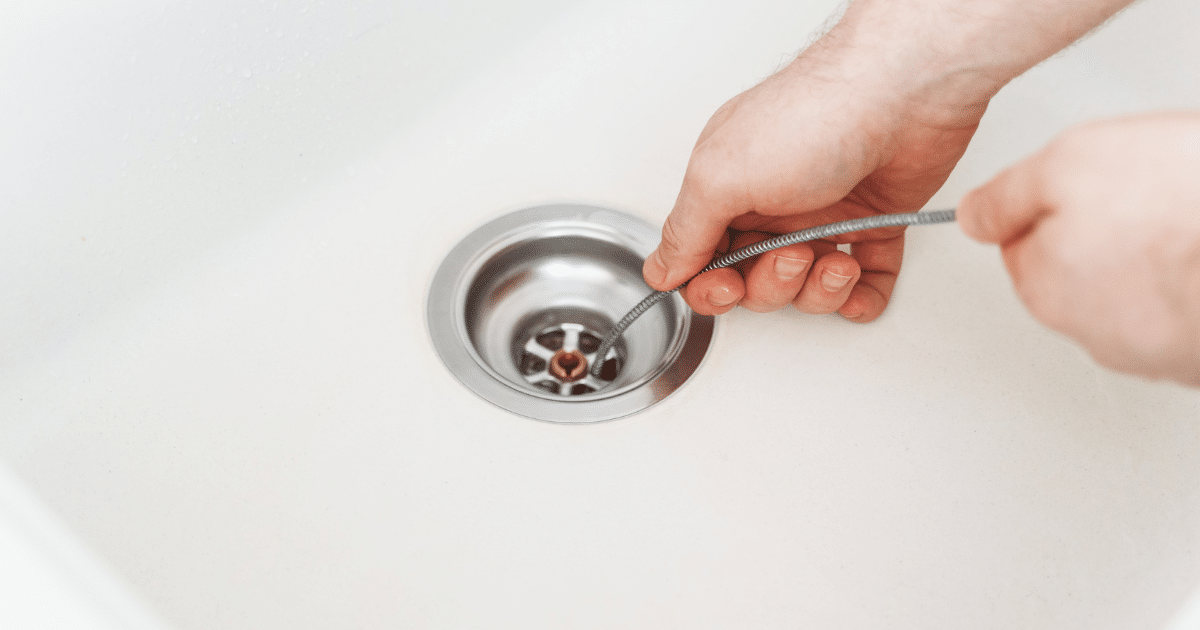
Top Plumber’s Snakes for Unclogging Drains
- FlexiSnake Drain Weasel: Designed for hair clogs, this highly flexible and reusable drain snake features micro-hooks for effective removal.
- Cobra Products Zip-It Drain Cleaning Tool: Perfect for quick and easy clog removal, this disposable plastic drain snake is affordable and ideal for bathroom sink and shower drains.
- RIDGID Power Spin+ with Autofeed: This motorized drain snake offers powerful performance, featuring an autofeed mechanism for effortless operation and compatibility with various drain sizes.
- General Pipe Cleaners Super-Vee: With a versatile design suitable for small to medium drains, this handheld drain snake comes with interchangeable cables and a self-feeding mechanism.
- Drainx Pro 50-FT Steel Drain Auger: Designed for heavy-duty use, this 50-foot auger features a sturdy steel cable and can tackle stubborn clogs in main sewer lines.
- RIDGID K-400 Drum Machine: Ideal for professional plumbers or homeowners dealing with extensive clogs, this powerful drum machine features a large capacity and a durable construction for long-lasting use.
Please note that it’s essential to choose the right drain snake for your specific needs and follow the manufacturer’s instructions for safe and effective use.

When to Call a Professional
While a plumber’s snake can solve many problems, some plumbing issues are better left to the pros. If you’re dealing with persistent clogs, damaged pipes, or a complete system backup, a professional plumber has advanced tools to address the problem safely and efficiently.
MD Sewer and Plumbing will take care of those nasty stubborn clogs for you. Call us today!
Maintaining Your Drains to Prevent Clogs | Plumbers Snake
Prevention is always better than cure. Follow these simple tips to keep your drains in good working order:
- Use drain strainers in sinks, showers, and bathtubs to catch hair, debris, and food scraps.
- Avoid flushing non-flushable items like wipes and hygiene products.
- Regularly clean kitchen sink drains to prevent grease buildup.
- Flush your pipes periodically by running hot water mixed with a bit of baking soda and vinegar.
With the tips and steps outlined above, you’ll be well-prepared to tackle any clog, whether it’s in the shower drain, kitchen sink, or toilet.
For larger or recurring clogs, don’t hesitate to consult a professional plumber to keep your plumbing system in top shape.
A little maintenance goes a long way in ensuring your pipes stay functional and efficient.
